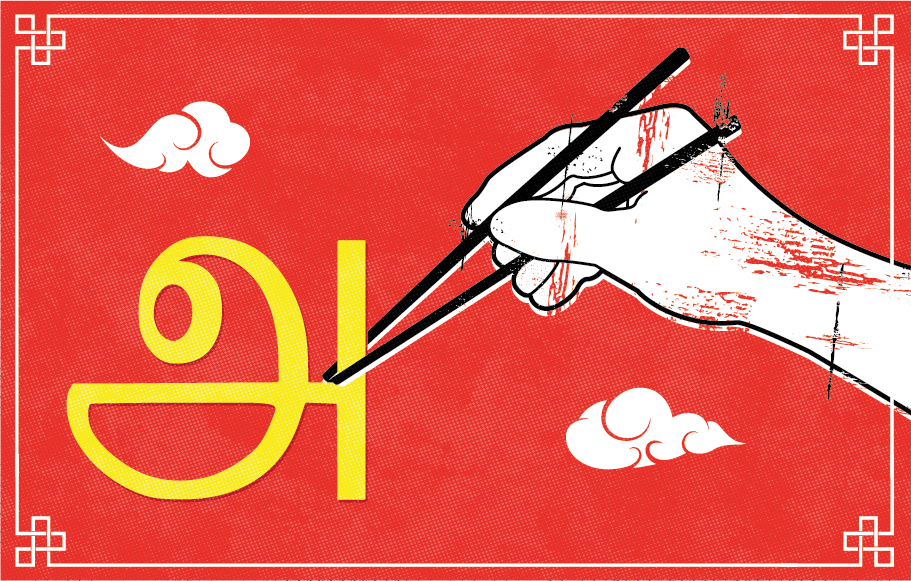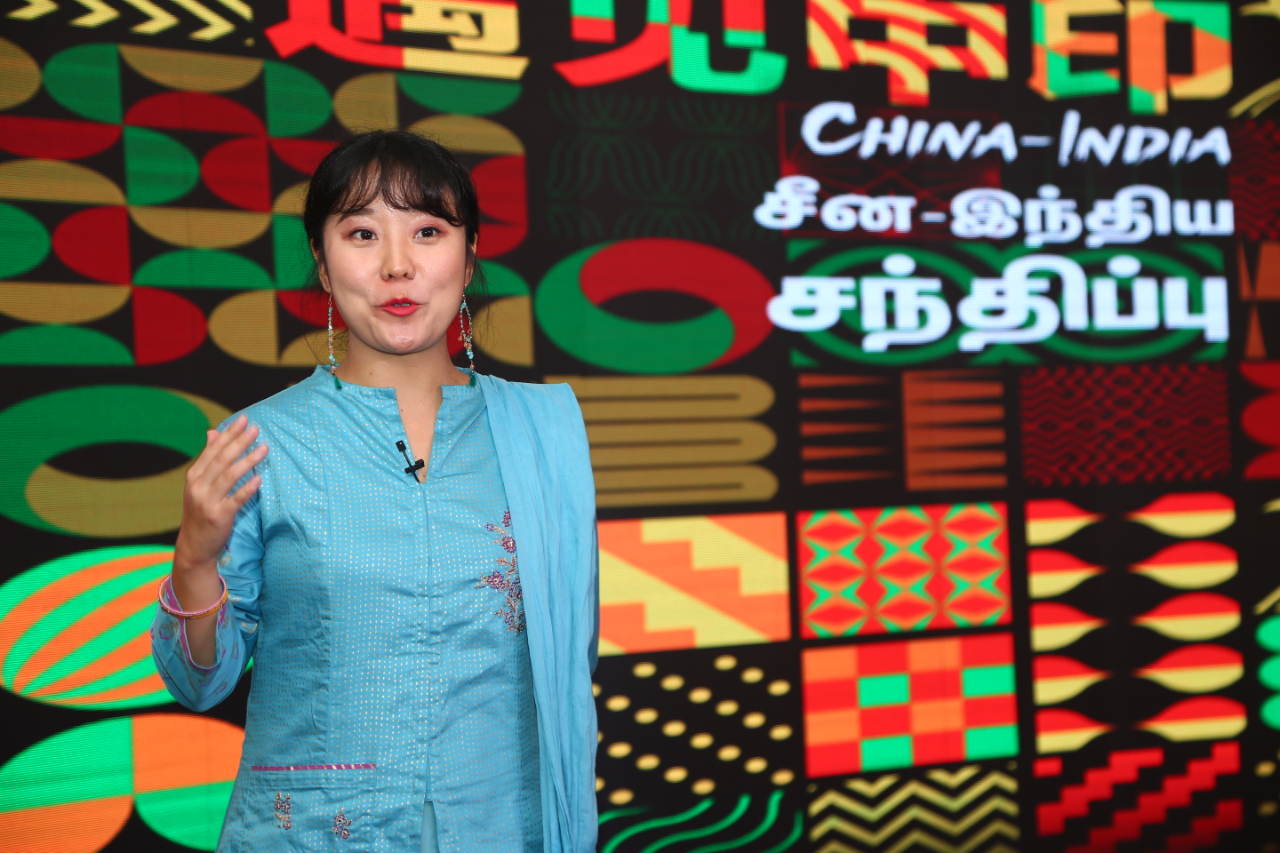
- Home
- News
- Analysis
- States
- Perspective
- Videos
- Education
- Entertainment
- Elections
- World Cup 2023
- Features
- Health
- Budget 2024-25
- Business
- Series
- NEET TANGLE
- Economy Series
- Earth Day
- Kashmir’s Frozen Turbulence
- India@75
- The legend of Ramjanmabhoomi
- Liberalisation@30
- How to tame a dragon
- Celebrating biodiversity
- Farm Matters
- 50 days of solitude
- Bringing Migrants Home
- Budget 2020
- Jharkhand Votes
- The Federal Investigates
- The Federal Impact
- Vanishing Sand
- Gandhi @ 150
- Andhra Today
- Field report
- Operation Gulmarg
- Pandemic @1 Mn in India
- The Federal Year-End
- The Zero Year
- Premium
- Science
- Brand studio
- Home
- NewsNews
- Analysis
- StatesStates
- PerspectivePerspective
- VideosVideos
- Entertainment
- ElectionsElections
- Sports
- Loading...
Sports - Features
- Budget 2024-25
- BusinessBusiness
- Premium
- Loading...
Premium

Chinese love learning Tamil, just like ancient times
The Chinese are learning Tamil and imbibing the culture, especially by giving themselves adopted Tamil names. That they speak the language as fluently as natives here is no secret.

At a time when the Tamil film industry was bringing big budget Hollywood action films starring Chinese actors to the screens in the state, the most sought after Tamil film director then, AR Murugadoss came up with a film titled ‘7 aam Arivu‘ (Seventh Sense) in 2011. It is a well-known fact that China had established a Silk Route and had trade relationship with Tamil Nadu in...
At a time when the Tamil film industry was bringing big budget Hollywood action films starring Chinese actors to the screens in the state, the most sought after Tamil film director then, AR Murugadoss came up with a film titled ‘7 aam Arivu‘ (Seventh Sense) in 2011.
It is a well-known fact that China had established a Silk Route and had trade relationship with Tamil Nadu in the ancient times. It is also known that Bodhi Dharma, a saint from Kancheepuram, a city famous for silk, went to China and spread Chan (Zen) Buddhism and Kung fu. The Sangam literature talks about the relationship between the two countries, which existed in a ‘cordial’ and non-hostile manner.
Though the film brought out some of these details to the Tamil masses, it portrayed the Chinese in a wrongful sense. The film portrayed ‘Nokku varma‘, which is said to be an art of hypnotising, once used by both Tamils and Chinese, comically. Portraying the Chinese as a villain, the film deepened the animosity Tamils had towards over Chinese.
It could be that the seed of the hate could have been sowed in 1963, just after the Sino-Indian war, through the film ‘Raththa Thilagam‘ starring Shivaji Ganesan. The film spoke about the war and till climax, it portrayed the heroine (Savithri) as an aide of China.
These kind of negative portrayal of the Chinese continued in popular culture, never affecting the Tamil film business. But today, the scenario has changed, with the change in relationship between the two countries. Many Tamil films are being screened in China these days.
What is more interesting is that it has been widely reported that, the Chinese are learning Tamil language through these films. It seems that ‘7aam Arivu‘, despite being not ‘China-friendly’, has not been able to stop the Chinese love for Tamil language.
But that is just one aspect of the learning part. There is a Tamil language department in Yunnan Minzu University, started in 2017, which was followed by one in Beijing Foreign Studies University in 2018. Through the departments, the Chinese students learn about Tamil-China trade history, literature and culture.
They not only learn the language but also adopt the culture in their life completely, says Uma Balu, founder-director, Sahara Asia, a foreign language school, Chennai.
“During their learning, Chinese students adopt a Tamil name. You can easily find Chinese having names like Kalaivani, Niraimathi, Easwari, etc. They like to call each other by their adopted names. Women students also choose to wear saree and pottu (bindi), during Tamil festivals,” she says.
Learning Tamil also ensures employment for the Chinese. “They act as guides for tourists who come to China from Tamil Nadu. They also get placed in companies situated in Tamil Nadu and act as a bridge between the employees and the management,” she says.
China’s love for Tamil language is not a new cultural aspect. It used to be there in ancient times, says Aazhi Senthil Nathan, secretary of Campaign For Language Equality and Rights, Chennai.
“From the Sangam age, Tamils have traded with the south east and east Asian ports. Tamilians’ connection with China was first established during Pallava and later Chola periods,” he says.
Mamallapuram, the current site of the informal meeting between Indian Prime Minister Narendra Modi and Chinese President Xi Jinping, was one of the ports of the Coromandel Coast that traded with China.
“During the Chola regime, three delegations were sent to China to establish direct trade links between Tamil and Chinese markets. Tamil traders built a Shiva temple in Quanzhou in the southern China during Kublai Khan’s Yuan dynasty. Kublai Khan offered funds for the temple construction and one of the names of the Shiva temple was Thirukkhaneechchuvaram. It was during his regime, that Khan’s friend and the famous traveller, Marco Polo, travelled from China to Pandiyan kingdom,” he says.
Because of these trade connections, the remnants of Tamil language is still found in Chinese vocabulary. Tamil words like Seeni (sugar), Seenam (silk) can be found in their dictionary, says Senthil Nathan.
“Ancient Tamilagam and Imperial China were trade partners in maritime silk road for more than 2,000 years. Both the ancient civilizations exchanged goods and ideas during the different ages of such partnership in the past and it stopped only when the European colonial powers captured the maritime routes in the Indian ocean” he says.
After the intrusion of European colonial powers in the trade, there was a gap between these two civilizations. This had an effect on the language too. For a long time, there was a silence over Tamil. It was revived, in 1963, when the Chinese government launched Tamil broadcasting service of China Radio International (CRI).
The reason for the long silence on Tamil language in China was due to the political scenario of that time, says Dr Ghadigachalam, former language expert at the CRI, which has now been brought under China Media Group (CMG).

“We can’t say that before 1963 people of China were oblivious to our language. There were people who taught Tamil to others, but in a small way. During the ‘Great Leap Forward’ and subsequent ‘cultural revolution’, minor languages like Tamil were not encouraged much,” he says.
Ghadigachalam, who worked at CRI for six years, taught Tamil to second generation students like Kalaimagal (Zhao Jiang), who is now heading the Tamil service.
The first generation of Tamil-speaking Chinese radio announcers went to Ceylon (now Sri Lanka) to learn Tamil and they followed the trend in CRI.
It was during Ghadigachalam’s period that the Chinese started coming to Tamil Nadu to learn Tamil. It was he who gave names like Kalaimagal to the Chinese announcers.
On how the Chinese learn the language fluently, he said they should show interest to learn Tamil more than just for their job.
“Learning Tamil just to manage the Tamil service will not help them learn the nuance of the language. They should not learn Tamil because it is their duty, but they should show interest out of the job,” Ghadigachalam adds.
“There is no surprise in providing Tamil broadcasting services from Singapore or Malaysia because those countries have a low but significant number of Tamil population. But launching such a service from a country where the Tamil population is naught, it is an achievement in itself. In that way, China’s achievement is significant. By providing uninterrupted service for more than 50 years, it has attracted listeners not only from the Indian side, but also from China,” says Prof Thanga Jaisakthivel, Department of Journalism and Communication, University of Madras.
In its initial days, the CRI broadcast Tamil programmes for half an hour through shortwave transmitters. Gradually, the timings were increased and now, they broadcast two hours in the mornings and evenings.
“The CRI Tamil service has ensured a special place in the hearts of Tamils here, because of its accessibility. If a listener wrote a letter to them, it was read out immediately during broadcasting hours. Listeners can also produce programmes and they are being broadcast. Besides, they select a handful of listeners from Tamil Nadu every year and take them to China for a month long paid tour,” says Jaisakthivel, who has been attending the meet from 1995.
The CRI broadcast its programmes in about 70 languages, of which Tamil was the only south Indian language. The second Indian language in which the language service was started was Hindi. The CRI also has Bengali and Urdu services now.
Radio being an effective tool for communication and education, many Chinese listeners, who value and show interest in knowing about Tamil culture, started learning Tamil through CRI.
According to officials, of its 70 language services CRI’s Tamil service is the only one to get a high number of letters from listeners. In Tamil Nadu alone there are around 20,000 listeners who hear the service. In all the districts of the state, the listeners have created ‘CRI listeners club’.
Poongothai, whose maiden name is Liao Liang, and works in the CRI, says the love for Tamil gave them lot of employment opportunities.
“Once we master Tamil language, some of us turn as teachers teaching Tamil in universities. Others join the CRI,” she says.
After learning Tamil, they became translators and many literature from both Tamil and Chinese sides, were translated into each other’s language.
Senthil Nathan, who is also an author of a book about China, is the publisher of Aazhi Publishers. He says, they have tie ups with Chinese publishers to bring books through translation.
“We have also tied up with publishers like Sinolingua, Shandong Education Press, Anhui People Publishing House and Commercial Press to bring Chinese books to Tamil readers, through translation. Also, we have undertaken a project of translation of Tamil Sangam poetry in Chinese,” he says.
The CRI, on its part has brought out a Chinese-Tamil-Tamil dictionary, says Jaisakthivel.
“The dictionary project was funded by Chinese government. It also brought out books for learning Chinese through Tamil, in five volumes. A listener from Tamil Nadu can get these books for free of cost,” he adds.

